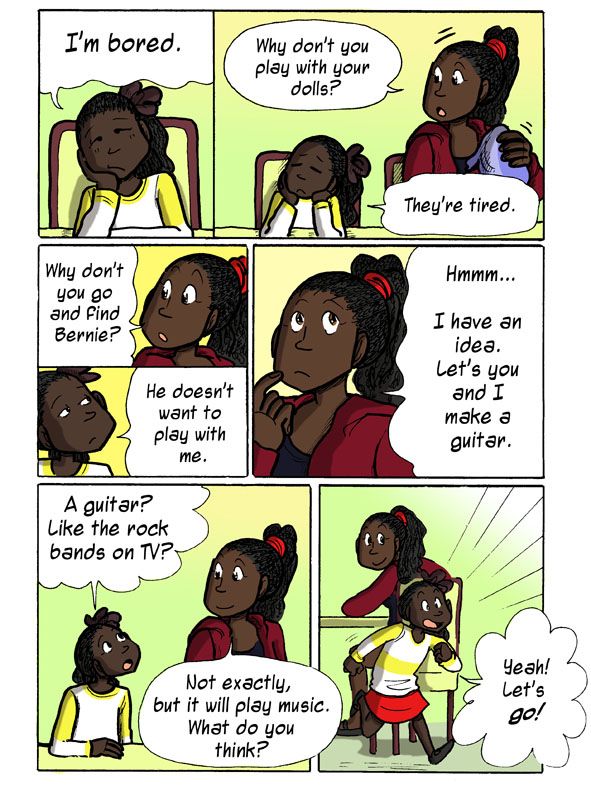
Want to make a guitar with Katy and her mom?
Here’s what you need:
-
- A piece of wood
- A Hammer
- Some rubber bands
- Some nails
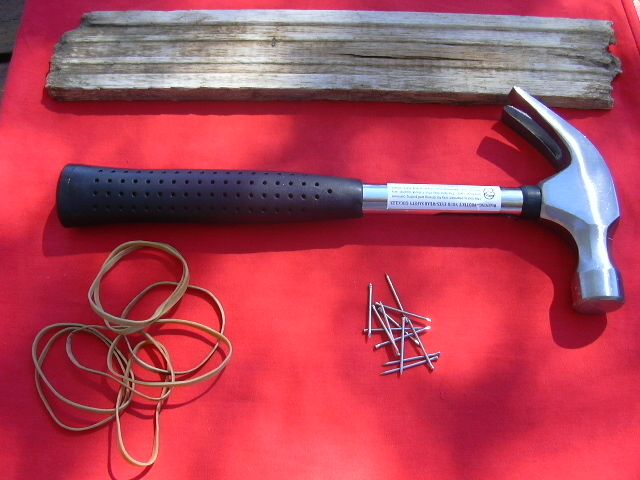 First, Katy’s Mom helps her pound the nails into the board. She pounds two on one end of the board and two on the other end of the board. You can pound three or four nails on each end depending on the number of strings that you want your guitar to have.
First, Katy’s Mom helps her pound the nails into the board. She pounds two on one end of the board and two on the other end of the board. You can pound three or four nails on each end depending on the number of strings that you want your guitar to have.
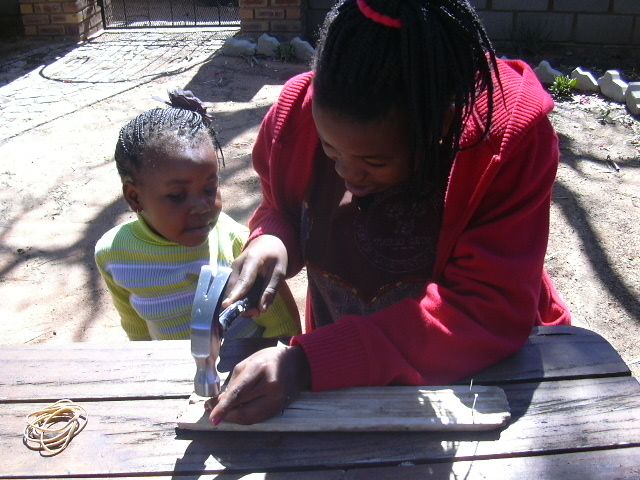 Make the nails on the other end to be at different distances like this:
Make the nails on the other end to be at different distances like this:
 Katy takes a rubber band and strings her guitar by slipping one end of the rubber band over the nail and then pulling the rubber band to reach the other nail at the other end of the board directly opposite it.
Katy takes a rubber band and strings her guitar by slipping one end of the rubber band over the nail and then pulling the rubber band to reach the other nail at the other end of the board directly opposite it.
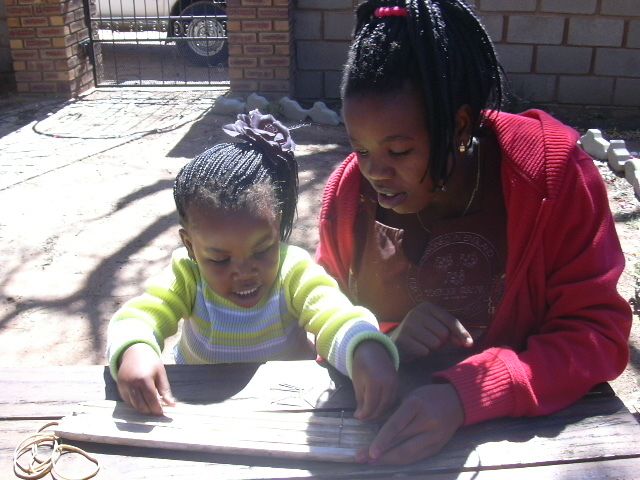
Can you string your guitar?
Now Katy is playing her guitar! Can you play your guitar?
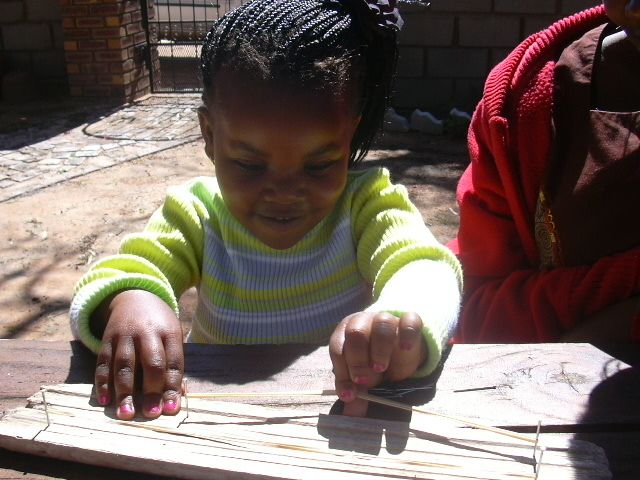

 When your guitar makes a noise, what are the rubber bands doing? Do your strings make the same sound? Which string makes the higher pitched sound? Which makes a lower pitched sound? How can you use the same string to make different pitched sounds?
When your guitar makes a noise, what are the rubber bands doing? Do your strings make the same sound? Which string makes the higher pitched sound? Which makes a lower pitched sound? How can you use the same string to make different pitched sounds?
Katy’s off to find a drummer and a singer – She’s making a rock band!!!!

See you later!!!
Parent’s corner: In this experiment your child will learn about sound. Sounds are produced when something vibrates. In the guitar, when the rubber bands are plucked they vibrate and produce a sound. Be sure to point out the vibrations to your child and demonstrate that when the rubber band stops moving the sound also stops. In your child’s homemade guitar the strings are of different lengths. The shorter rubber band produces a lower pitched sound when struck because it is under less tension so it vibrates slower. The longer string is pulled tighter and vibrates faster and produces a higher pitched sound. Anyone who plays or has watched a person play a stringed musical instrument knows that while playing the person moves their fingers up and down the length of the string. They do this to shorten the string. When the string is shorter it will vibrate faster producing a higher pitched sound. In this way the musician can use one string to produce a range of notes. Your child’s homemade guitar can work in the same manner. By making an individual string shorter by pressing the rubber band down with his or her finger, your child can produce a higher note. With the combination of the various lengths of rubber bands at different tensions and the pressing down and shortening of the rubber bands with their fingers, your child will have the ability to play a whole range of notes on their guitar and you’ll be making beautiful music together in no time!
